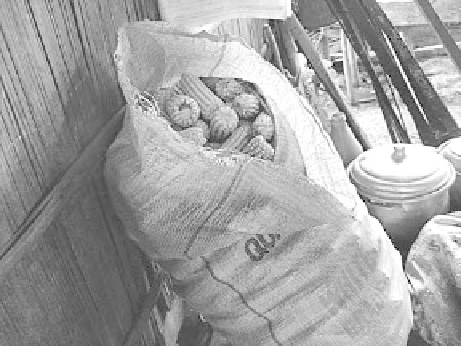Agriculture Reference
In-Depth Information
States Steve has a college degree plus numerous short training courses and conferences.
It is difficult to find labor with the knowledge to operate complicated machinery.
10.11
SEED
Seed is vital for all farmers (Fig. 10.12). In times of famine a farmer will guard seed
until starvation approaches. Only then will the family sacrifice their seed. Seeds can
be generally grouped in three broad categories: open pollinated, hybrid, and transgenic.
There is no outward difference in appearance to indicate the type of seed. The important
differences are contained within the genetic makeup of each seed.
10.11.1 Open Pollinated Seed
Before the 1900s all seed came from open pollinated plants. Farmers around the world
saved some of their harvested seed to use for planting the next season. The wealth of a
farmer often rested on his ability to carefully select the best seed for next year's crop.
By selection a farmer could increase yields, improve insect resistance, improve disease
resistance, change seed color, and even seed size. This method of selection and saving
seed has been used by humans since we first domesticated plants. Farmers who were
better at selecting good seed, or were just lucky, sometimes sold seed to neighbors.
Other
times
they
jealously
guarded
their
seed
to prevent
their
neighbors
from
gaining an advantage.
10.11.2 Hybrid Seed
The development of hybrid maize started in 1920 in the United States. By 1943 most of
the maize in Iowa was hybrid. A unique feature of a hybrid crop is that new seed must
be purchased each year. Replanting the seed harvested from a hybrid will only give 50
Figure
10.12.
Maize saved for seed in the Philippines.









